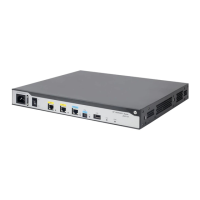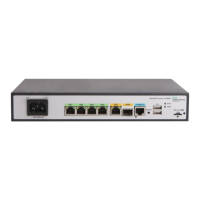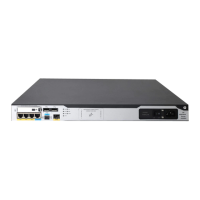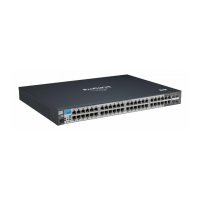12
Configuring proxy ARP
Proxy ARP enables a device on one network to answer ARP requests for an IP address on another
network. With proxy ARP, hosts on different broadcast domains can communicate with each other as
they would on the same broadcast domain.
Proxy ARP includes common proxy ARP and local proxy ARP.
• Common proxy ARP—Allows communication between hosts that connect to different Layer 3
interfaces and reside in different broadcast domains.
• Local proxy ARP—Allows communication between hosts that connect to the same Layer 3
interface and reside in different broadcast domains.
Enabling common proxy ARP
Step Command Remarks
1. Enter system view.
system-view
N/A
2. Enter interface view.
interface
interface-type
interface-number
The following interface types are supported:
• VLAN interface.
• Layer 3 Ethernet interface.
• Layer 3 Ethernet subinterface.
• Layer 3 aggregate interface.
• Layer 3 aggregate subinterface.
3. Enable common
proxy ARP.
proxy-arp enable
By default, common proxy ARP is disabled.
Enabling local proxy ARP
Step Command Remarks
1. Enter system view.
system-view
N/A
2. Enter interface view.
interface
interface-type
interface-number
The following interface types are
supported:
• VLAN interface.
• Layer 3 Ethernet interface.
• Layer 3 Ethernet subinterface.
• Layer 3 aggregate interface.
• Layer 3 aggregate subinterface.
3. Enable local proxy ARP.
local-proxy-arp
enable
[
ip-range
startIP
to
endIP ]
By default, local proxy ARP is
disabled.

